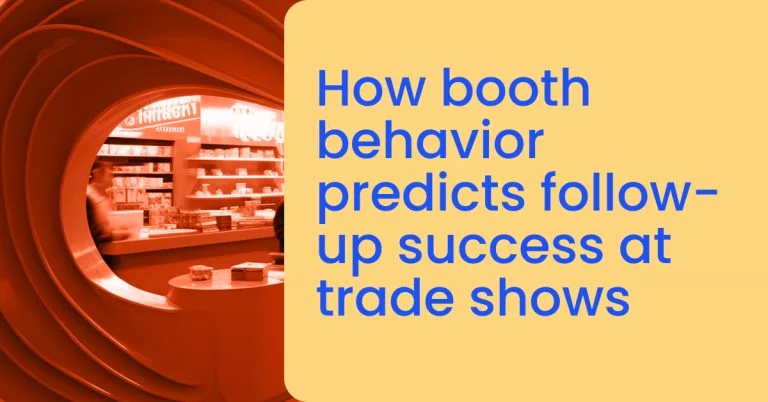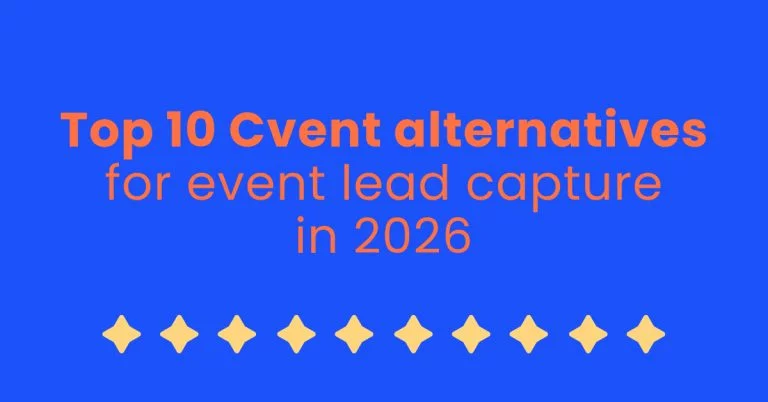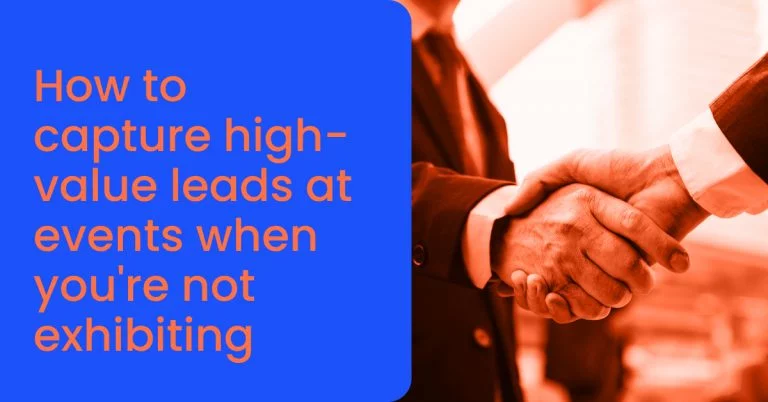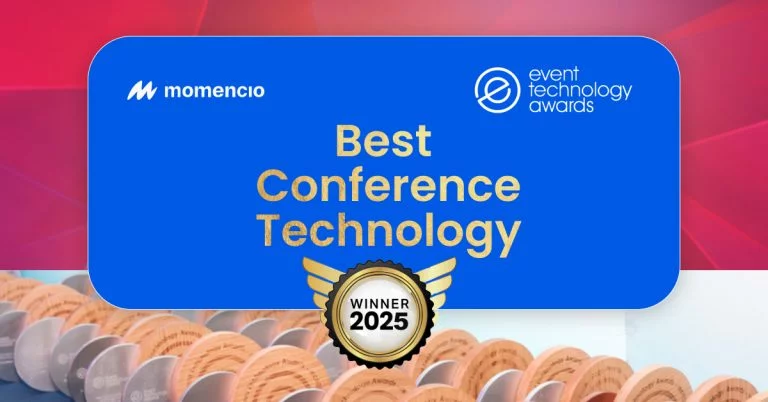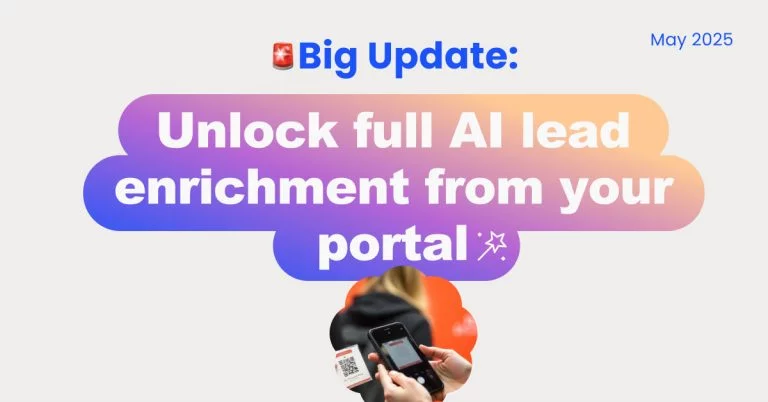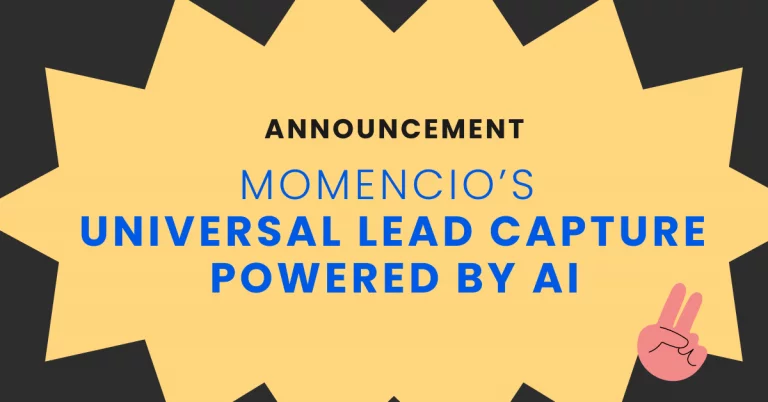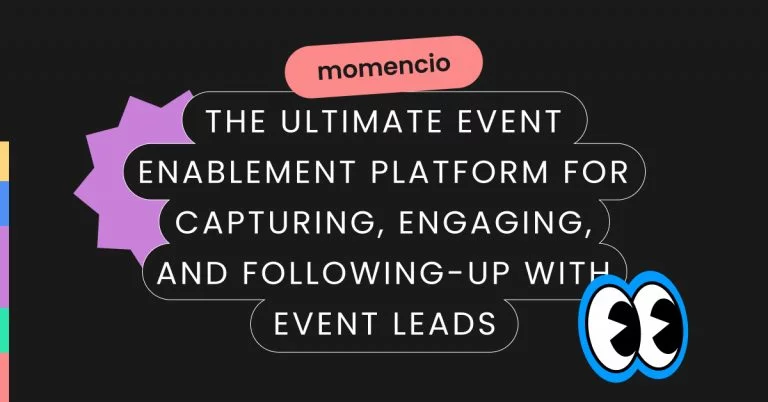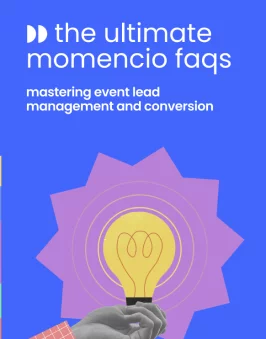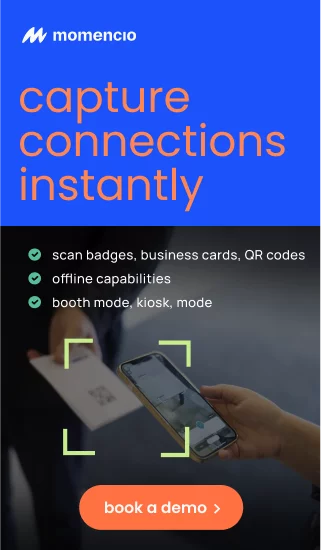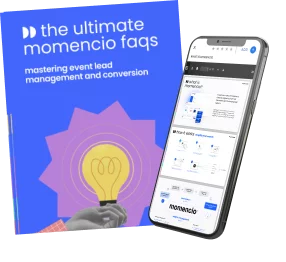Most event teams walk away from a trade show feeling like it went well. The booth was lively. People stopped by. A decent number of leads were captured. There were good conversations. Maybe even a few compliments from sales. But this is exactly where false event success begins.
It happens when the surface looks good, but the follow-through doesn’t. When the numbers feel impressive but don’t move pipeline. When effort gets mistaken for progress. And unless you know what to look for, it’s easy to overestimate how well things actually went.
False event success isn’t about failure. It’s about misreading signals. Booth traffic isn’t intent. Lead volume isn’t value. Follow-up activity isn’t momentum. These are all common traps, and even experienced teams fall into them.
In this piece, we’ll unpack five signals that often get misread as success—and what to pay attention to instead. It’s not about adding more work. It’s about seeing the right picture from the start.
Platforms like momencio help with that by showing what leads do after the event—what they engage with, who comes back, what actually drives action. But the mindset shift starts before the metrics. It starts with knowing where false confidence comes from, and how to move past it.
Booth traffic means nothing in the forecast
There’s a reason booth traffic gets talked about first in every event recap.
It’s visible. It’s immediate. It makes everyone—sales, marketing, leadership—feel like the investment is paying off. Dozens of conversations. Nonstop scanning. People queueing up. In the moment, it feels like momentum.
But once the event ends and the sales cycle begins, booth traffic fades. Fast.
Ask any field marketer who’s done the hard follow-up work: traffic alone doesn’t translate to pipeline. It doesn’t predict conversions. It doesn’t inform prioritization. And if it’s the main metric used to evaluate success, it leads teams into bad decisions—overestimating interest, misallocating sales time, and reporting vanity KPIs to leadership.
The uncomfortable truth is this: Most booth traffic is noise.
It’s not a sign of buyer intent. It’s a byproduct of location, design, giveaways, and footpath luck. And while these things matter for visibility, they don’t tell you who’s serious—or who should be pursued. That’s where most event strategies fall apart.
To avoid this, you need to treat the booth as a filter, not a funnel.
That means two things:
- First, qualify in real time. Don’t just collect badge scans. Capture what was discussed, what the lead asked about, and what problems they’re trying to solve.
- Second, set up a way to track what each lead does after the event. Because that’s where intent shows up.
Platforms like momencio were built exactly for this use case. During the conversation, reps can create a personalized Livemicrosite for each lead—tailored to the topics they showed interest in. The lead gets it instantly. From there, momencio tracks all engagement: which links were clicked, how much time they spent, what content they viewed, how often they returned. All of this is captured as part of that lead’s digital body language—with scoring applied automatically based on actual behavior, not assumptions.
This removes guesswork from follow-up. Sales doesn’t have to chase every scan. Marketing doesn’t have to defend event ROI with surface-level stats. And field teams finally get a clear answer to the question that matters: Who actually wants to buy?
Booth activity is a snapshot. Useful, but incomplete. If it’s not paired with behavioral data, it’s just theater.
What happens next—what the lead does after the handshake, after the pitch, after the follow-up—is the real signal. And that’s what you build your pipeline around.
Lead clarity creates pipeline
At most trade shows, lead numbers are the headline.
500 scans. 800 contacts. 1000s of booth visitors.
On the floor, and at the time, it might look like momentum. Even on paper, it gives everyone from marketing to the C-suite something to rally around.
But volume without context is noise.
You don’t close deals with volume—you close them with fit, timing, and clarity. And if your lead list doesn’t distinguish who’s genuinely interested from who just stopped by for a demo or giveaway, then you’re not building pipeline. You’re building a backlog of dead ends.
This is where many teams get stuck. They assume that higher lead counts equal higher ROI. So they measure success by how many business cards were collected or how many emails were added to the CRM. But that data point—without behavioral context—is meaningless. It tells you who was there, not who’s worth pursuing.
And in a real-world sales environment, chasing the wrong leads costs time, budget, and opportunity. It frustrates your reps. It slows your motion. It makes follow-up look active, but it’s not productive. And if you’re reporting these numbers upward, you’re setting the wrong expectations with leadership from the start.
Here’s what actually needs to happen: Every lead needs to be tagged with what they cared about, how they engaged, and what they did next. This is what creates prioritization. This is what creates motion.
With momencio, the moment a conversation ends, your team can instantly send a lead their own personalized microsite—populated with only the content they expressed interest in. You’re not guessing. You’re capturing what was discussed and delivering relevant value, immediately.
And this is where the real intelligence begins. The microsite becomes a behavioral signal. It tracks what the lead opens, how much time they spend, how many times they return, and what content gets shared with others on their team. That data flows back to your CRM in real time. No forms. No delay. No extra effort.
So now, instead of dumping 500 generic contacts into sales’ lap, you’re handing them a ranked list of engaged accounts—leads that actually did something after the booth. That’s not just helpful. That’s operational clarity.
Volume is no longer the goal. Precision is.
The question to ask isn’t “How many leads did we get?”
It’s “Which leads gave us a signal—and what are we doing with them?”
High follow-up activity is just noise, unless it’s aligned
One of the most misleading signs of false event success is a packed calendar the week after.
Reps are sending emails. SDRs are making calls. Marketing is pushing nurture campaigns. From the outside, it looks like the event is generating serious momentum. But what often goes unnoticed is how much of that activity is scattered, repetitive, or flat-out ignored by leads.
This happens when event follow-up becomes a process checklist, rather than a response to real buyer behavior.
Most field teams are under pressure to “show the hustle” after an event. Send thank-you emails. Share decks. Log CRM entries. Book follow-up calls. But the pace of post-event motion doesn’t mean much if it’s not tied to signals that matter. In fact, it often buries the few real opportunities under a pile of generic outreach.
And for marketing leaders trying to report on event ROI, this is where things get murky. You see follow-up numbers going up, but no movement in the opportunity pipeline. The team is working, but it’s disconnected from what the buyer actually wants.
This is where event workflows need to evolve from manual effort to signal-driven response.
When platforms like momencio track post-event engagement at the individual lead level—microsite opens, repeated views, asset interactions, shares within the buying group—you get a different kind of follow-up strategy, with Intellistream. You don’t need to spray the same content to 300 leads. You focus on the 40 who’ve actually taken action.
And here’s the operational advantage:
- Sales doesn’t have to guess who to prioritize.
- Marketing doesn’t have to run reactive campaigns.
- Everyone’s aligned on what good follow-up looks like: timely, relevant, and based on real engagement.
The moment a lead revisits the microsite, shares it internally, or spends 10+ minutes reading your product deck, momencio scores that behavior and pushes a signal to your CRM. That’s what reps should act on. Not a calendar reminder. Not a two-day follow-up rule. Real behavior, in real time.
This shift matters.
Because in B2B event marketing, time kills deals. And every minute spent chasing a non-engaged lead is a minute not spent closing the one who’s actually leaning in. High activity numbers make for busy dashboards. But high-relevance follow-up makes for real pipeline.
If you’re reporting post-event success, don’t talk about how many emails were sent. Talk about how many buying signals were acted on.
Executive praise doesn’t equal business impact
There’s a moment every field marketer knows well.
The event wraps up. You’re back at your desk. And a senior executive drops a message: “Great event. Booth looked amazing. Heard great feedback.”
It feels like a win. And in some ways, it is. Executive recognition matters, especially when you’ve been grinding logistics, content, sales coordination, and lead capture for weeks.
That praise is often based on surface impressions—booth design, brand visibility, social buzz, maybe a few conversations they overheard on the floor. It’s not a reliable indicator of whether the event actually moved the business forward.
In fact, this is one of the most dangerous forms of false event success, because it sets the wrong tone for how event ROI gets evaluated.
Executives love big-picture impressions. But what they need is clarity on what the event delivered in terms of qualified pipeline, buyer engagement, and deal progression. If field marketers don’t steer the conversation there, they risk having their efforts judged on sentiment, not substance.
You’ve seen it happen:
- An event with sleek branding and strong booth presence gets called a “huge success.”
- A quieter event that generated a handful of highly engaged enterprise leads gets overlooked.
- Budgets get allocated based on perceived energy, not on results.
The job of the field marketer is to close that gap.
That means walking into the post-event review with hard data—not just photos, but proof.
Here’s what you should do:
- Show how many leads showed intent post-event.
- Map engagement journeys using real behavioral data.
- Highlight which accounts re-engaged, who shared content internally, and where you’re seeing late-stage movement as a direct result of the event.
Platforms like momencio don’t just log interactions—they build a behavioral blueprint for every lead. From the moment a contact is captured, momencio enriches their profile using AI EdgeCapture™, adds Smart Notes from booth conversations, and sends a personalized LiveMicrosite™ tailored to what was discussed.
Every post-event action—opens, scroll depth, return visits, document views—is tracked in real time through IntelliStream™, with engagement scores calculated automatically by AI IntelliSense™. This data is instantly synced to your CRM, giving sales full visibility into which accounts are actively evaluating and which ones need a nudge.
Post-event reports are not real event intelligence
Almost every event ends with a report. It gets built fast. It gets shared widely. But it rarely answers the question leadership actually cares about:
Did this event move the business forward?
Most post-event reports are filled with high-level metrics:
- Number of leads captured
- Booth scans
- Social media impressions
- Meetings scheduled
- Email open rates
They’re easy to collect and easy to present. But on their own, they’re shallow. They give the appearance of success without proving impact. And in B2B event marketing—where budgets are high and sales cycles are long—that’s a problem.
Because if your report ends at activity, then your leadership team still doesn’t know:
- Which leads showed true intent
- Which accounts re-engaged after the event
- What content resonated and got shared
- Which deals can be attributed back to this event
Without this, events stay in the marketing column—not the revenue one. And that’s how budgets get cut, teams get questioned, and event marketing gets undervalued.
What’s needed is a shift from static reports to dynamic, intelligence-driven reporting.
Instead of exporting leads into spreadsheets and manually tracking follow-ups, we at momencio have built a live, always-updating dashboard to show live engagement. You can see which leads engaged with their personalized microsite, how long they spent inside, which documents they viewed, and whether the asset was forwarded or shared with others in the buying team.
It doesn’t just tell you what happened at the event. It shows what’s happening because of it.
And when you can tie that behavior directly to pipeline movement—whether it’s a new opportunity created, a deal accelerated, or a buying group activated—you’re not just reporting. You’re delivering event intelligence that informs the next budget, the next activation, and the next strategic decision.
So the next time leadership asks for a post-event report, don’t hand them activity metrics.
Hand them proof of buyer intent. Show them pipeline velocity. Break down which messages landed, which content performed, and which accounts are now in motion.
That’s the difference between being a team that ran a good event… and a team that drove revenue from it.
Conclusion
Only 32% of marketers feel confident in how they measure event ROI, with the remaining 68% reporting dissatisfaction. This suggests most teams don’t truly know which events delivered real pipeline, underscoring the prevalence of false event success.
If you’re done confusing activity with impact, it’s time to rethink how your team runs events. momencio gives you the tools to capture clean, contextual lead data at the booth, deliver personalized follow-ups in seconds, and track every signal that points to real buying intent. No more guesswork. No more dead-end lists. Just clarity from first scan to closed deal.
Ready to see what real event intelligence looks like?
Book a demo and turn your next trade show into a revenue engine.




